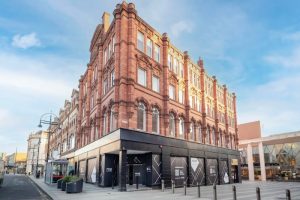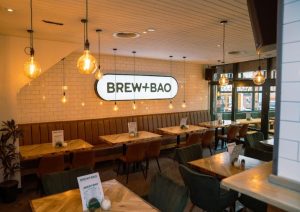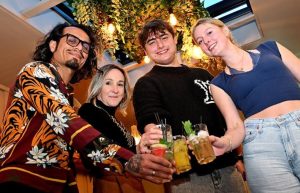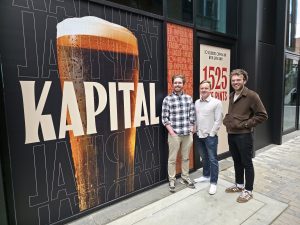Motoring: Brownlee Brothers take a SEAT in campaign; Renault gears up for Kadjar launch; and more

WITH the buzz created by Jaguar for its new F-Pace, crossovers appear to be all the rage at the moment with every manufacturer worth their salt trying to muscle in on a niche which is fast developing into a major segment.
The latest to try and carve out a slice of the market is Renault which, buoyed by the success of its Captur, is now launching its Kadjar model, the brand’s first C-segment crossover.
Renault is keen to highlight its global ambitions and it knows that the SUV sector offers it a major opportunity.
It says the Kadjar will boost its presence on the international stage, as it is due to go on sale initially in Europe and in many African and Mediterranean Basin countries, followed by China.
It said the car was intended to shake up established thinking by bringing an innovative and attractive proposition to the crossover market. It claims the Kadjar will stand out as a result of its exterior styling, while its interior is said to be both sporty and refined, courtesy of the improved materials quality and attention to detail.
Available with either four- or two-wheel-drive transmission, Renault has balanced the vehicle so it can be used both on and off-road.
It hopes its compact dimensions – footprint (4.45 metres long x 1.84 metres wide) – will deliver easy manoeuvrability around town and attract buyers living within towns and cities as well as those in more rural areas in need of more rugged capabilities.
In keeping with the other major trend for this segment, Renault is stressing the connectivity benefits of the vehicle.
The Kadjar features advanced connectivity with the R-Link 2® multimedia system, along with a variety of driving aids.
The vehicle also benefits from a range of efficient engines designed to position the vehicle at the forefront of the segment in terms of low fuel consumption and CO2 emissions.
The Renault Kadjar will be unveiled to the public at the 85th Geneva Motor Show, which opens to the public on March 5.
It will go on sale in the summer in both Europe and parts of Africa and the Mediterranean Basin region. It is scheduled to appear in right hand drive (RHD) form in the UK in the autumn.
It is clear for all the major manufacturers, not just Renault, that the SUV/crossover market offers significant opportunities.
In 2014, almost one in every five vehicles sold across the world was a crossover, with the segment enjoying a market share of 23% in Europe and 26% in China. The segment consequently represents a real entry point to the key growth markets targeted not just by Renault but by most of the volume manufacturers.
Captur was the second model to appear in Renault’s crossover range after the Koleos, and such was the popularity of the vehicle that success was almost immediate. The vehicle emerged at the top of the European B-segment crossover market, with slightly more than 178,000 registrations in 2014.
It is now hoping the Kadjar will see similar results in the C-segment market, which slots into the range above Captur.
Renault sold a total of 2,712,432 vehicles worldwide in 2014; its customers spread across 128 countries. It now markets 46% of its vehicles outside of Europe (compared with 37% in 2010).
The group’s product plan is the cornerstone of this growth and of the promotion of its new image.
It hopes the Kadjar will now contribute to the group’s expansion by extending its range and geographical scope.
The Kadjar will be manufactured at Renault’s Spanish plant in Palencia which currently exports 83% of its products to more than 50 different countries across five continents.
However, the vehicle is also poised to spearhead Renault’s offensive into China.
In the same way that the Range Rover Evoque is the first of JLR’s vehicles to be manufactured in China, so the Kadjar is for Renault.
In December 2013, Renault formalised the creation of a joint venture with Dongfeng and consequently began the construction of a factory in Wuhan with an initial production capacity of 150,000 vehicles.
Work on the factory began in January 2014, with vehicle manufacturing scheduled to start early in 2016. Today, a little more than a year after the agreement was signed, DRAC already employs a staff of 1,000 in China.
In the medium term, Renault’s plan is to achieve a 3.5% share of a Chinese market that saw 22m vehicles registered in 2014. This means the French manufacturer is aiming for sales equivalent to 750,000 per year.
The flexibility of the model is that it will share a platform with Nissan, Renault’s strategic partner since 1999. The multi-platform strategy, part of the CMF project, means the same modular parts can be produced for different variants, thus reducing costs.
The CMF project is broken down into three segments: CMF-A for small vehicles, CMF-B for medium-size vehicles and CMF-C/D for the largest models. The Renault Kadjar uses the Renault-Nissan Alliance’s CMF-C/D platform which is the fruit of four years’ joint development.
The platform’s production is shared between Renault and Nissan, with Renault bringing its knowledge and experience to the design and manufacture of the rear suspension and transmissions. Already proven by three Renault and Nissan vehicles, the CMF-C/D platform is an illustration of the effectiveness of a flexible production strategy.
The synergies developed permit the shared use of as many non-visible parts as possible, for example, the engine block and navigation system architecture.
Inside, the Kadjar is intended to offer drivers and passengers a smart, comfortable and carefully appointed interior which mirrors the refinement of the model’s exterior lines.
The model benefits from a raft of intuitive technologies which are said to contribute to an efficient, relaxed driving experience.
Available with either 4×2 or 4×4 transmission, the Kadjar is intended to be equally at home on open roads as it is in built-up areas. It features a combination of SUV, estate car and saloon cues.
The SUV elements offer all-wheel-drive practicality but with the option of reverting to two-wheel-drive for better handling in the town or city.
Renault also wants to highlight the user-friendly layout and courtesy of handles located in the boot, the Easy Estate system automatically unlocks and folds the 60/40-split rear seats.
The two different boot configurations make it possible to choose between a ‘high’ position with a completely flat floor to facilitate the loading of large items, or a ‘low’ position to provide a maximum carrying capacity of 472dm3.
Meanwhile, the option of compartmentalising the boot into two or three sections is a way to protect items and prevent them from moving around while on the move.
The low fuel consumption is enhanced by the car’s Stop and Start system, which has the added benefit of cutting pollution in built-up areas.
The connectivity of the vehicle sees it come equipped with an ultra-modern dashboard incorporating a seven-inch capacitive colour touchscreen TFT display. It is available with the Renault R-Link 2® multimedia system seen in the new Renault Espace. R-Link 2® comes as standard with voice recognition to control the navigation, telephone, apps and radio. Its customisable home page enables easy access to the most frequently used functions.
Prices have yet to be announced.
Je suis DS
CONTINUING the French theme, in its first year as a Citroen sub-brand, DS is this week celebrating the 60th anniversary of its most famous incarnation – the original 1955 DS.
From today (February 4) until Sunday, car lovers visiting the Parisian Porte de Versailles Exhibition Centre will be able to stroll around a special exhibition area chronicling the history of what is arguably France’s most recognisable image after the Eiffel Tower.
The DS exhibition has been organised with support from the Amicales Citroën associations along with DS and SM enthusiasts’ clubs. It features five prestige period models, plus one of the latest arrivals for the DS brand, DS 3 Cabrio, in Ultra Prestige form.
The stars of the show are:
• DS 19 from 1959, in its original configuration, with a grey-rosé body, aubergine roof, and royal blue interior. This model, adapted for export to Germany, features an engine temperature gauge on the dashboard plus an FM/LW radio. The three-main-bearing engine is coupled with a four-speed gearbox with hydraulic control.
• DS 21 Cabriolet from 1968, with a hydraulic-control gearbox. The superb finish on this exceptionally elegant model extends to red leather upholstery, contrasting with the Carrare white body.
• DS 20 Pallas from 1973, a top-end luxury model featuring tobacco leather upholstery, beige Tholonet bodywork, tinted windows and even a sunroof. The 1985 cm3 engine is mated to a hydraulically controlled four-speed synchromesh gearbox.
• SM Coupé from 1971, previously owned by King Hassan II of Morocco. This model features metallic beige paintwork, special registration plates, natural leather upholstery, air conditioning, a Continental Edison Hi-Fi radio specific to this model, tinted windows and fog lamps. The engine is a Maserati V6.
• SM Coupé from 1972, a model with a Scarabée brown body and light brown upholstery. In addition to the self-levelling hydraulic suspension, similar to that on the DS, this car also boasts Citroën’s innovative DIRAVI ‘power-assisted return’ steering, for exceptional driveability.
Brownlees in the hot seat for new vehicle launch
SPANISH manufacturer SEAT is showing a little bit of Yorkshire grit by teaming up with World Champion triathletes and local heroes Alistair and Jonny Brownlee for the launch of its new four-wheel-drive model, the Leon X-PERIENCE.
As part of a media campaign to support the launch, the company has produced the ‘Brownlee Brothers X-PERIENCE – Tri Another Way’.
The first element of the campaign is the creation of five films with the Olympian duo to highlight the outdoor adventure lifestyle and off-road capability of the X-PERIENCE.
The first two, ‘Meet the Brownlees’ and ‘Train like the Brownlees’ are now showing on a specially created online hub, http://www.telegraph.co.uk/sponsored/motoring/seat-adventure. A further three have been produced based on the usual triathlon disciplines, and will see the brothers race each other in man versus machine (Leon X-PERIENCE) challenges, leading to a nailbiting finale, all set in their beloved Yorkshire.
Speaking about their partnership with SEAT, Alistair said: “We had brilliant fun filming the Challenges – we chose the ideal location in the Yorkshire Dales to make it tough for the car and for us. The car was really enjoyable to drive, but you’ll need to watch the films to see who ended up winning.”
Jonny added: “It’s been a great project to be involved with and hopefully people will enjoy the films and find them useful for their training as well.”
Drive safely.








